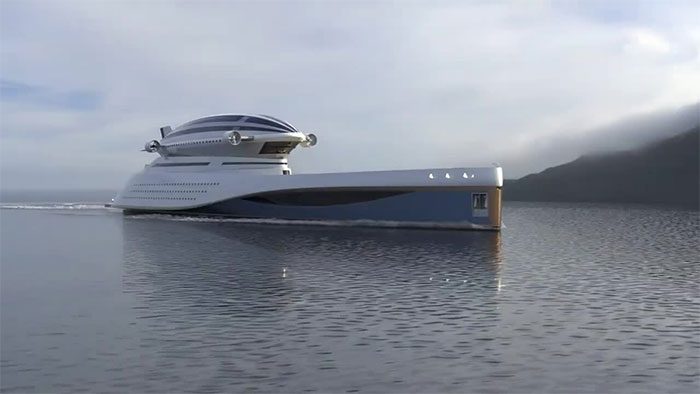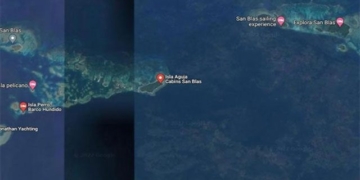The Colossea superyacht is equipped with a 10,000 kg airship above, enabling passenger transport in areas that are difficult for the yacht to access.
Concept of the Colossea superyacht with an airship. (Video: Lazzarini Design)
Italian designer Pierpaolo Lazzarini has introduced the Colossea superyacht concept, measuring 204 meters long, serving as a floating base for a detachable airship, as reported by Design Boom on March 2. The structure on top of the yacht features a landing pad designed to fit the shape of the airship, facilitating smooth take-offs and landings.
This concept evokes memories of the N1 airship (later renamed Norge) from Italy, which took its first test flight in Rome nearly a century ago. On May 12, 1926, the N1 completed its first verified flight to the Arctic, becoming the first airship to fly over the polar ice cap between Europe and America.
With Colossea, Lazzarini reimagines the iconic design of the N1 using modern materials and technology. The new airship retains a similar size to its predecessor but features upgraded propulsion and materials, made of carbon fiber from the internal structure to the outer surface, and is powered by eight electric motors.

The Colossea superyacht serves as a floating base for a detachable airship.
The Colossea superyacht can accommodate 44 passengers and 20 crew members. Meanwhile, the airship has a payload of 10,000 kg, capable of carrying 24 passengers and 10 crew members. Not only does it transport passengers to areas that are hard for the superyacht to reach, but it can also serve as the main means of transportation for extended periods.
Inside the Colossea’s airship are 22 separate compartments containing components such as liquid hydrogen tanks, batteries, cabins, and various other internal structures. Liquid hydrogen is pumped into the compartments to adjust the necessary weight balance and serves as a reserve in case of gas loss.
The top of the airship is covered with solar panels, but its engines run on liquid hydrogen and can achieve a maximum speed of 167 km/h. Meanwhile, the propulsion of the superyacht comes from four HTS engines with a maximum speed of 41 km/h. The yacht can utilize the airship’s propellers for additional thrust and more efficient movement.




















































